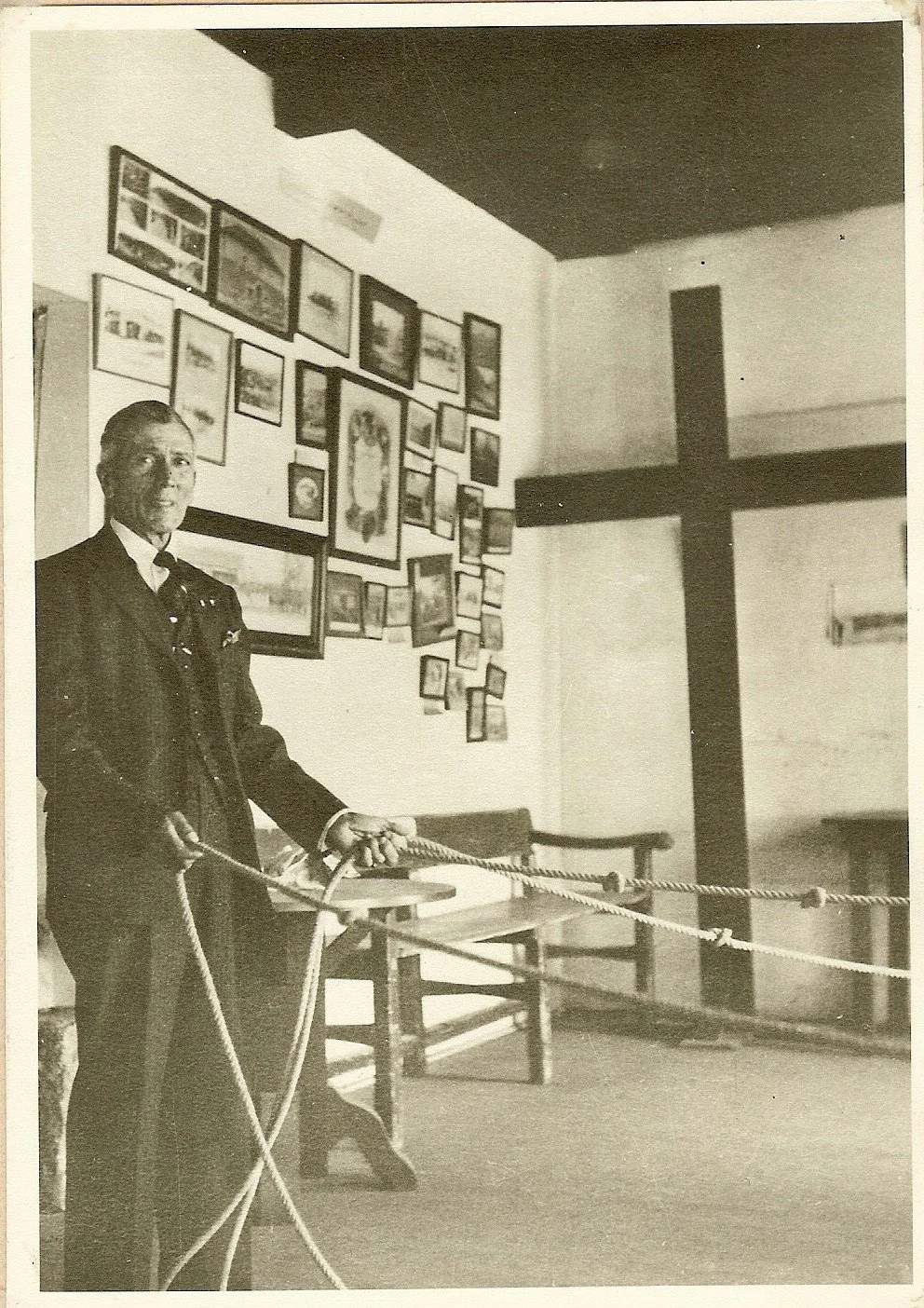Gregorio Silverio, age 73, in the bell tower.
Photo taken in 1951.
Gregorio Silverio, age 75 standing in the mission belfry in front of the Gloria Bell.
This was one of the last photos taken of him.
History of Bell Ringers at Mission San Luis Obispo
Bell ringing at the Mission began as early as 1776, when Father Pedro Font recorded the bells sounding to welcome the De Anza expedition—marking one of the first written references to their use at San Luis Obispo
In 1818, Father Luis Antonio Martínez commissioned four large bells cast in Lima by Manuel Vargas, which became iconic symbols of the mission and community life.
One of the most notable bell ringers was Gregory (Gregorio) Silverio, who learned the ropes in the late 19th century and served for over fifty years until his death in 1954. When he passed away, the bells fell silent—no one else knew the traditional ringing patterns as well as he did.
To preserve the tradition, he had taught his granddaughter Virginia Lee White, who later revived the practice. With her, and with support from community leaders, the bells resumed regular ringing at Mass, funerals, weddings, and other occasions after a thirteen-year hiatus.
In 2005, aging bells were replaced with five new bells, each named after one of the first five early Alta California missions. Since then, a dedicated group of volunteer ringers continues to manually perform traditional sequences—such as the Angelus at noon and 6 p.m.—maintaining this historic practice as a central rhythm of mission and community life.
These volunteers not only uphold a ritual dating back to 1776, but also carry forward the unique patterns and rhythms passed down through generations—from Silverio to Virginia and beyond—keeping the Mission’s bells ringing as they have for two centuries.

